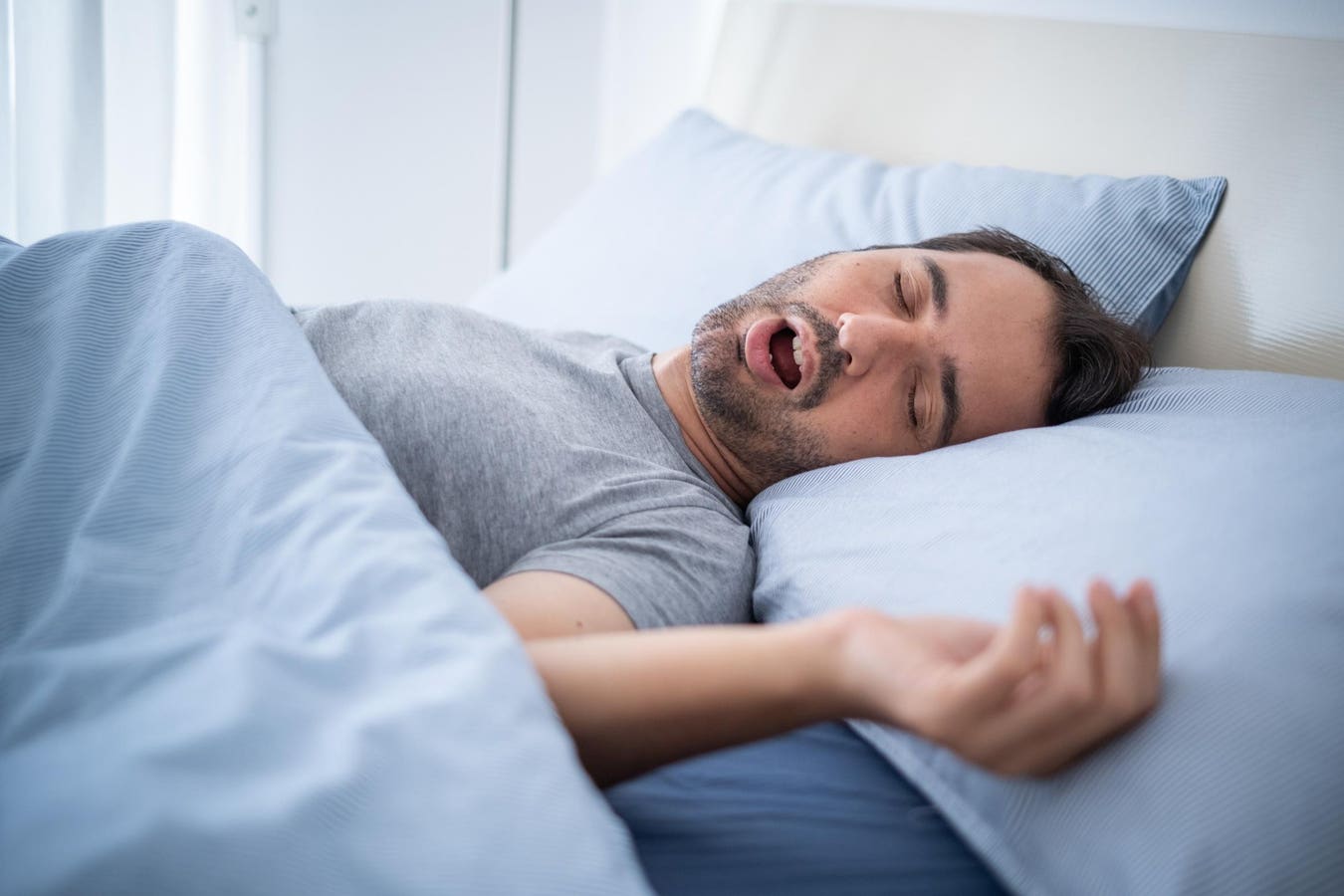The American Academy of Sleep Medicine has indicated that an estimated 26 percent of adults between … More
You could say that it’s difficult to mask the challenges that people with obstructive sleep apnea face every day. But if this pill from Apnimed, Inc. eventually gets approved by the U.S. Food and Drug Administration, it could give those OSA sufferers who are having trouble wearing a continuous positive airway pressure mask while sleeping another option. Apnimed recently announced rather eye-opening topline results from the SynAIRgy phase 3 clinical trial of their AD109 pill. A little over half (51.2%) of the study participants who took the once-a-day pill had a reduction in their OSA severity while nearly a quarter (22.3%) experienced achieved complete OSA control.
Obstructive Sleep Apnea Affects A Quarter Of The Adult Population
More options would probably be a welcome possibility for the over 25 million adults in the U.S. who suffer from OSA, based on the National Healthy Sleep Awareness Project. The American Academy of Sleep Medicine has indicated that an estimated 26 percent of adults between the ages of 30 and 70 years have sleep apnea. That may be an underestimate because people are kind of asleep when they are experiencing signs and symptoms of OSA. It could take someone else trying to share a bed with you to tell you that you are snoring or even gasping for breath when you are asleep.
OSA is one type of sleep apnea. Sleep apnea is when you repeatedly stop and start breathing while sleeping. Its important to know if this is happening because breathing is sort of important. Sleep apnea can lead to sleep deprivation, which, in turn, can lead to daytime drowsiness and over the longer term various chronic medical conditions, as I’ve described previously in Forbes. One such condition is high blood pressure, which in turn can raise the risk of heart disease and stroke.
OSA is when the apnea is due to your throat muscles relaxing too much and blocking your airway. That’s why one possible sign of OSA is snoring, which can occur when air tries to pass through the narrowed airway. The following illustration shows what can happen to the airway with OSA:
(Illustration: Getty)
Here Are The Current Treatment Options For Obstructive Sleep Apnea
All of the currently available treatment options for OSA are focused on one thing: keep that airway open as much as possible. Changes in sleep position could help. For example, sleeping on your side, particularly the left side, can keep the airway open better than sleeping on your back. the latter can allow your tongue and soft palate to collapse into your airway.
One oft-mentioned treatment option is the CPAP mask and machine. The name is a clue to what it does. You wear a mask that will continuously will blow air into your nose or nose and mouth. That air is supposed to provide positive pressure to keep your airways open, sort of like blowing air into one of those balloons that can become a balloon animal. Although a variety of such masks are available, wearing such a mask throughout the night may not necessarily be the most pleasant, comfortable or sexy thing.
One oft-mentioned treatment option for obstructive sleep apnea is the continuous positive airway … More
Another option is some kind of mouthpiece designed to keep the throat open during sleep. Some such devices thrust your lower jaw forward. Other such devices hold your tongue is particular positions.
When OSA gets particularly severe, surgery may be needed. This could be surgery to remove excess tissue in the neck that may be blocking the airway or move forward the jaw bones to give more space behind the tongue and soft palate. Life-threatening cases of OSA may even require a tracheostomy, which is when a hole is made in your throat and a breathing tube is inserted there.
Now you may have heard about one of the glucagon-like peptide-1 receptor agonists, Zepbound, getting FDA-approval for severe OSA. This would be mainly for folks who have OSA due mainly to obesity. Excess fatty tissue in the neck can indeed predispose you to OSA. Therefore, weight loss can be helpful in reducing OSA. However, many people suffer from OSA do not have excess body weight. For many, it’s just the anatomy of the airway and the way the nerves happen to be working or not working that allows too much collapse of the airway.
The Apnimed Pill Could Become The First Prescription Pull For Obstructive Sleep Apnea
This brings us to how AD109 is supposed to work. The medication is a combo of 2.5 mg of aroxybutynin, a new type of antimuscarinic, and 75 mg atomoxetine, which inhibits the reuptake of the neurotransmitter norepinephrine, thereby increasing the time it spends in between nerves. These work to increase the nerve signals sent through the hypoglossal motor nucleus that control the muscles in the upper airway.
The medication has already gone through more than 15 Phase 1 and 2 clinical trials. A Phase 2b clinical trial named MARIPOSA showed that those taking AD109 experienced statistically significant reductions in their AHIs. AHI stands for apnea-hypopnea index, a commonly used measure of how severe sleep apnea is. The AHI is the average number of apneas, which are complete pauses in breathing, and hypopneas, which are partial reductions in breathing, that happen per hour of sleep during a sleep study. Normally, this should be less than five. Having five to 14 such events per hour classifies you as having mild sleep apnea. When this goes up to 15 to 29, it’s moderate sleep apnea. The severe range is 30 or more such events per hour.
Next up was the SynAIRgy trial, a randomized, double blind, placebo-controlled, parallel-arm of the medication designed to extend for six months. It included 646 adult study participants with OSA who either couldn’t tolerate or didn’t want to use CPAP. Around half (49.1%) of the study participants were women. At the beginning of the trial, 34.4% had mild OSA, 42.2% moderate and 23.2% severe. Patrick Strollo, Jr., MD, Vice Chair of Medicine for Veteran’s Affairs and a Professor of Medicine at the University of Pittsburgh School of Medicine. served as the study chair of SynAIRgy. Strollo described the results so far as “highly encouraging.”
At the 26-week mark in the SynAIRgy trial, those taking AD109 every day had on average a 55.6% reduction in their AHI. As mentioned previously, 51.2% actually dropped in sleep apnea disease severity categories with 22.3% going to the no apnea category, namely less than five events per hour. Those taking AD109 also on average had improvements in the amount of oxygen they were getting into their blood via their lungs. Strollo mentioned how there were also no AD109-related serious adverse events with the medication in general being well-tolerated. He also said that AD109 would be a long-needed significant advance for a problem that has long lacked new options. Topline results from a second Phase 3 clinical trial, LunAIRo, of AD109 will probably be available by the third quarter of 2025.
All of this means that the company is currently on track to submit a New Drug Application for AD109 to the FDA by early 2026. If it reaches the market, AD109 would be the first prescription pill specifically for obstructive sleep apnea—which, again, affects quite a lot of people out there, probably much more than people realize. So don’t sleep on what happens next.









